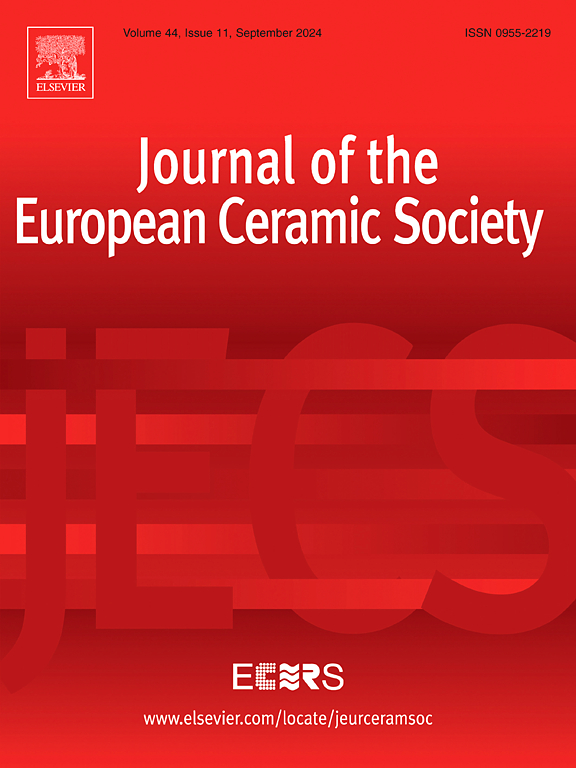Low-temperature dielectric relaxation and microwave-terahertz dielectric response of Ca-Sm-Ti-O perovskite ceramics
IF 5.8
2区 材料科学
Q1 MATERIALS SCIENCE, CERAMICS
Journal of The European Ceramic Society
Pub Date : 2025-02-13
DOI:10.1016/j.jeurceramsoc.2025.117287
引用次数: 0
Abstract
Low-loss (high-Q×f, where Q = 1/tan δ) dielectric ceramics can help achieve efficient microwave signal transmission and reduce heat generation. In the traditional Ca-Ln-Ti-O perovskite system (where Ln = rare earth) with the general formula of Ca1–xLn2x/3TiO3 (CSTx), the sharp decline in the Q×f value when x > 0.5 remains unexplained, posing a challenge for designing low-loss ceramics. In this study, CSTx ceramics (x ≤ 0.7) are synthesized via the solid-state reaction method, with a focus on their structure, defects, and broadband dielectric properties. A significant discrepancy between the Q×f values in the microwave and terahertz bands is found when x ≥ 0.6, suggesting the presence of additional loss mechanisms in the microwave band beyond ion displacement depolarization. Meanwhile, the low-frequency dielectric spectra show a weak dielectric relaxation in the low-temperature region, attributed to the partially ordered A-site vacancies. Therefore, this relaxation can act on the microwave frequency band at room temperature, resulting in a sharp decline in Q×f values. Such low-frequency and low-temperature dielectric relaxation should not be ignored in the research of microwave dielectric ceramics. These findings provide a crucial theoretical reference for developing low-loss microwave dielectric ceramics.
求助全文
约1分钟内获得全文
求助全文
来源期刊

Journal of The European Ceramic Society
工程技术-材料科学:硅酸盐
CiteScore
10.70
自引率
12.30%
发文量
863
审稿时长
35 days
期刊介绍:
The Journal of the European Ceramic Society publishes the results of original research and reviews relating to ceramic materials. Papers of either an experimental or theoretical character will be welcomed on a fully international basis. The emphasis is on novel generic science concerning the relationships between processing, microstructure and properties of polycrystalline ceramics consolidated at high temperature. Papers may relate to any of the conventional categories of ceramic: structural, functional, traditional or composite. The central objective is to sustain a high standard of research quality by means of appropriate reviewing procedures.
 求助内容:
求助内容: 应助结果提醒方式:
应助结果提醒方式:


